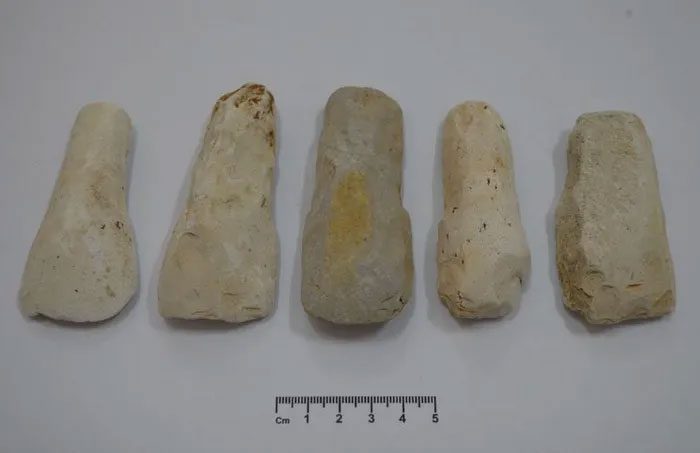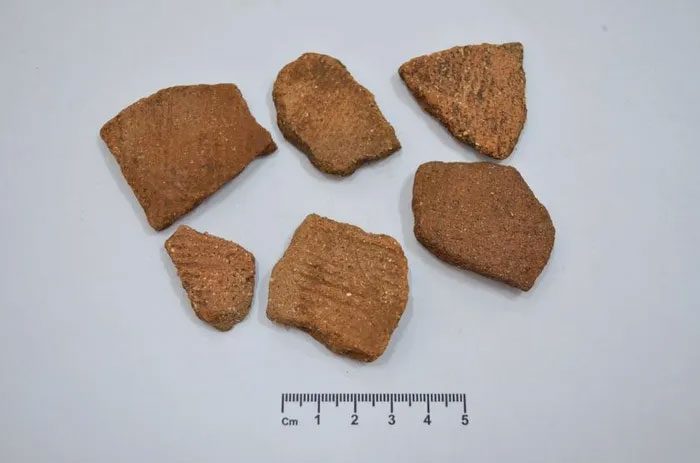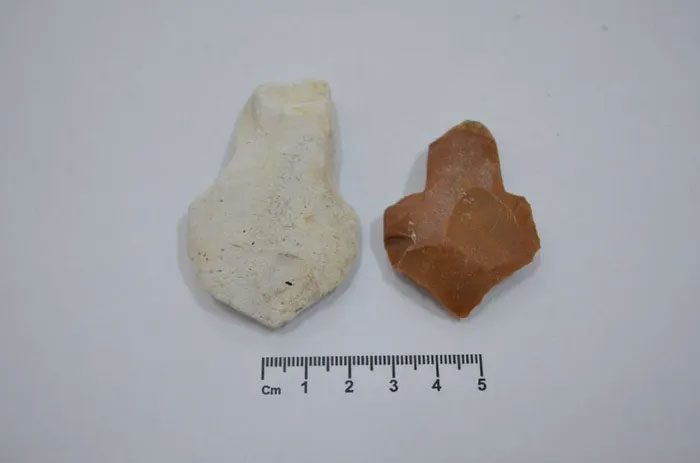The Hoàng Ân Water Reservoir (Ia Phìn Commune, Chư Prông District, Gia Lai Province) was constructed shortly after the liberation and underwent repairs in 2011.
In 2022, the Provincial Museum collaborated with the Archaeological Center (Southern Region Social Science Institute) to conduct an investigation and survey, discovering the existence of a prehistoric archaeological site at this location.
Recently, the water level of the Hoàng Ân Reservoir has dropped significantly. Local residents fishing in the area have uncovered a variety of prehistoric stone tools appearing on the surface. The discovery site is a land mound approximately 3,000m2 in size, gently sloping down towards the lake. The coordinates are identified as 13°49’32’’ N latitude and 107°57’10’’ E longitude, at an elevation of 649m above sea level. This location is where several streams converge from regions such as Bàu Cạn, Ia Phìn, and the area surrounding Mount Hàm Rồng.
The artifacts discovered are scattered or embedded in the surface, with the majority concentrated near the lake’s edge, where erosion has exposed many relics. Mr. Trần Trọng Thủy (Chi Lăng Ward, Pleiku City), who reported the findings, stated that in 2022, while fishing, he also found several stone tools and a ceramic jar.

Artifacts collected by Mr. Trần Trọng Thủy near the Hoàng Ân Water Reservoir as the water recedes. (Photo: X.T).
During our survey in this area, we found numerous artifacts on the surface, primarily made of stone and ceramics, including: bull’s tooth-shaped tools with elongated forms, sloped shoulders, one flat face, and one convex face (9 specimens); sloped axes (5 specimens); small opal stone axes (5 specimens); stone fragments (1 specimen); grinding stone fragments (5 specimens); chiseling fragments (8 specimens), chiseling slabs (6 specimens), and ceramic shards (31 specimens, of which 22 are unadorned and 9 have incised patterns).
Notably, there are many ceramic fragments belonging to types of pots and jars with flared mouths, made from thick, coarse, gray clay, primarily decorated with incised patterns and cord designs.
A geometric, material, and craftsmanship comparison indicates that the artifacts found at Hoàng Ân Reservoir share many similarities with previously excavated sites such as Biển Hồ, Trà Dôm (Pleiku City), Thôn 7 (Chư Prông District), and Tai Pêr (Chư Sê District)…

Bull’s tooth-shaped artifact. (Photo: Xuân Toản).

Prehistoric decorated ceramic fragments. (Photo: Xuân Toản).

Pointed tools. (Photo: Xuân Toản).
It can be confirmed that the Hoàng Ân Reservoir is a site that exhibits characteristics of the common tools used during the Late Neolithic period in the Central Highlands, dating back approximately 3,000 years.
Based on the discovered artifacts, especially the ceramic shards and tools that were modified for reuse, archaeologists believe that the Hoàng Ân site has many features typical of a residential site. However, this is merely a preliminary assessment. To clarify the nature and value of the site, further systematic research steps are necessary.
During the rainy season, the entire area where the artifacts were discovered in the Hoàng Ân Reservoir is submerged, increasing the risk of erosion and destruction of the site. Therefore, relevant authorities need to implement investigation, survey, excavation, and research programs concerning the site to contribute to the understanding of prehistoric times in Gia Lai province and the Central Highlands as a whole.


















































